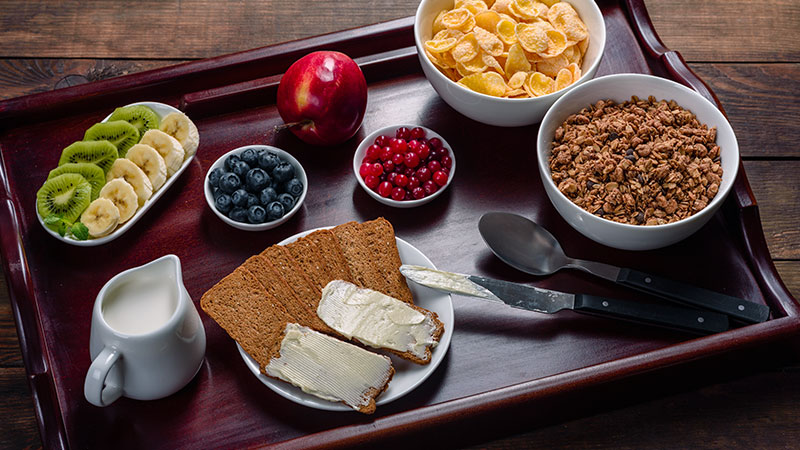Are you struggling to manage your diabetes effectively? One key aspect you may be overlooking is your eating schedule. A diabetes-friendly eating schedule plays a vital role in regulating blood sugar levels and promoting overall health.
By strategically planning your meals and snacks, adhering to regular meal times, and practicing portion control, you can gain better control over your diabetes and reduce the risk of complications.
In this blog post, we’ll delve into the importance of a structured eating plan for diabetes management.
From balanced meal examples to tips for staying hydrated and maintaining consistency, we’ll provide valuable insights to help you optimize your eating schedule for better blood sugar control. So, stay focused.

Understanding Diabetes and Blood Sugar
Diabetes is a chronic condition where the body cannot properly process blood sugar (glucose), leading to high blood sugar levels.
It primarily involves the hormone insulin, produced by the pancreas, which helps cells absorb glucose for energy.
There are two main types: Type 1 diabetes, where the body produces little or no insulin, and Type 2 diabetes, where cells become resistant to insulin or the pancreas doesn’t produce enough.
Managing blood sugar is crucial to prevent complications such as heart disease, kidney damage, and nerve problems.
Monitoring blood glucose levels, following a balanced diet, regular physical activity, and taking prescribed medications are key strategies.
In Type 1 diabetes, insulin injections or an insulin pump are necessary, while Type 2 diabetes may be managed with lifestyle changes and oral medications.
Education and support are vital for individuals with diabetes to maintain their health and prevent complications, emphasizing the importance of regular medical check-ups and self-care.
Importance of an Eating Schedule for Diabetes Patients

Maintaining a consistent eating schedule is paramount for individuals managing diabetes.
The timing and composition of meals play a critical role in regulating blood sugar levels and overall health. Here’s an in-depth look at why an eating schedule is crucial for diabetes patients:
Blood Sugar Regulation
Establishing regular meal times helps stabilize blood sugar levels throughout the day. Consistent carbohydrate intake allows for better insulin management, reducing the risk of sudden spikes or drops in blood glucose.
This stability is particularly important for individuals with diabetes, as fluctuations can lead to various complications, including hyperglycemia and hypoglycemia.
Optimizing Insulin Sensitivity
A consistent eating schedule can enhance the body’s sensitivity to insulin. By spacing meals evenly throughout the day, insulin production and utilization remain balanced.
This prevents insulin resistance, a common issue in Type 2 diabetes where cells become less responsive to insulin’s effects.
By promoting insulin sensitivity, a regular eating schedule supports better blood sugar control and reduces the need for higher insulin doses.
Preventing Overeating and Binge Eating
Following a structured eating plan discourages overeating and binge eating episodes, which can wreak havoc on blood sugar levels.
Skipping meals or going long periods without eating may lead to intense hunger, causing individuals to consume large quantities of food at once. This can result in rapid spikes in blood glucose, followed by a subsequent crash.
By adhering to scheduled meal times, individuals can better manage their appetite and portion sizes, promoting more stable blood sugar levels.
Facilitating Medication Management
For individuals with diabetes who require medication or insulin therapy, having a consistent eating schedule is essential for proper dosage timing.
Certain medications, such as insulin, are designed to coincide with meal times to effectively manage blood sugar levels.
Deviating from a regular eating routine can disrupt this synchronization, potentially leading to medication errors or inadequate glucose control.
Supporting Weight Management
Consistency in meal timing and portion control aids in weight management, a crucial aspect of diabetes care.
Maintaining a healthy weight can improve insulin sensitivity and reduce the risk of complications associated with obesity, such as cardiovascular disease and metabolic syndrome.
By adhering to a structured eating schedule, individuals are better equipped to make mindful food choices and avoid excessive calorie intake, thereby promoting weight maintenance or loss when necessary.
Enhancing Energy Levels and Well-being
Irregular eating patterns can contribute to fluctuations in energy levels and mood. Skipping meals or prolonged fasting can leave individuals feeling fatigued, irritable, and mentally foggy.
By consuming balanced meals at regular intervals, individuals with diabetes can sustain steady energy levels throughout the day, supporting overall well-being and productivity.
Additionally, stable blood sugar levels can help reduce feelings of anxiety or stress often associated with managing diabetes.
Adhering to a consistent eating schedule is essential for diabetes management. By regulating blood sugar levels, optimizing insulin sensitivity, and supporting overall health and well-being, a structured meal plan plays a pivotal role in diabetes care.
Components of a Diabetes-Friendly Eating Schedule
Crafting a diabetes-friendly eating schedule involves careful consideration of various components to ensure optimal blood sugar management and overall health. Here are key elements to include:
Balanced Meals and Snacks

A diabetes-friendly eating schedule should consist of balanced meals and snacks that incorporate a combination of carbohydrates, protein, and healthy fats.
Carbohydrates should be distributed evenly throughout the day to prevent sharp spikes in blood sugar levels.
Including lean proteins and fiber-rich foods helps slow down the absorption of carbohydrates, promoting more stable blood glucose levels.
Regular Meal Times
Consistency in meal timing is essential for individuals with diabetes. Aim to eat meals at roughly the same times each day to help regulate blood sugar levels and optimize insulin sensitivity.
Skipping meals or eating irregularly can lead to erratic fluctuations in blood glucose, making it challenging to maintain control over diabetes.
Portion Control
Monitoring portion sizes is critical for managing blood sugar levels and preventing overeating. While carbohydrates are an important source of energy, consuming excessive amounts can cause blood sugar spikes.
Use measuring tools or visual cues to gauge appropriate portion sizes of carbohydrates, proteins, and fats. Eating smaller, more frequent meals can also help control portion sizes and prevent overindulgence.
Whole Foods Emphasis
Prioritize whole, nutrient-dense foods in your eating schedule. Fruits, vegetables, whole grains, lean proteins, and healthy fats provide essential vitamins, minerals, and fiber while minimizing added sugars and refined carbohydrates.
Incorporating a variety of colorful fruits and vegetables ensures a diverse range of nutrients and antioxidants, supporting overall health and diabetes management.
Hydration
Staying hydrated is crucial for individuals with diabetes to support kidney function and regulate blood sugar levels.
Include water as the primary beverage choice throughout the day and limit consumption of sugary drinks and alcohol, which can contribute to blood sugar spikes and dehydration.
Aim to drink at least eight glasses of water daily, adjusting intake based on individual needs and activity levels.
Post-Meal Monitoring
Monitoring blood sugar levels after meals provides valuable insight into how different foods and meal compositions affect glucose levels.
Keep track of post-meal blood sugar readings to identify patterns and make adjustments to your eating schedule as needed.
If blood sugar levels consistently spike after certain meals, consider modifying portion sizes or food choices to achieve better glycemic control.
Flexibility and Adaptability
While consistency is important, it’s also essential to be flexible and adaptable in your eating schedule. Life can be unpredictable, and there may be occasions when meal times need to be adjusted or food choices vary.
Be prepared with healthy snack options for on-the-go situations and aim to make the best choices possible within the circumstances.
A diabetes-friendly eating schedule should prioritize balanced meals and snacks, regular meal times, portion control, whole foods, hydration, post-meal monitoring, and flexibility.
By incorporating these components into your daily routine, you can effectively manage blood sugar levels and support overall health and well-being.
Ideal Sample of Diabetes Eating Schedule
Establishing a structured eating schedule is vital for individuals managing diabetes. Consistency in meal timing and composition plays a crucial role in regulating blood sugar levels and supporting overall health.
These adjustments can be made based on personal preferences, dietary restrictions, and individualized nutritional needs, with guidance from a healthcare provider or registered dietitian.
Here’s the sample eating schedule below.
Breakfast (7:30 AM)

Start the day with a balanced breakfast consisting of complex carbohydrates, protein, and healthy fats.
Example: Oatmeal topped with fresh berries, a handful of almonds, and a dollop of Greek yogurt. Serve with a side of scrambled eggs or egg whites for added protein. Beverage: A glass of water or unsweetened herbal tea.
Mid-Morning Snack (10:00 AM)

Enjoy a nutritious snack to maintain steady energy levels and prevent blood sugar dips.
Example: A small apple paired with a tablespoon of almond butter or a handful of raw veggies with hummus. Beverage: A cup of green tea or water.
Lunch (12:30 PM)

Opt for a well-rounded lunch that includes lean protein, whole grains, and plenty of vegetables.
Example: Grilled chicken breast or tofu salad with mixed greens, quinoa, cherry tomatoes, cucumbers, and a drizzle of olive oil and balsamic vinegar. Beverage: Water with a splash of lemon or lime juice.
Afternoon Snack (3:00 PM)

Enjoy a balanced snack to tide you over until dinner and prevent overeating later in the day.
Example: A small handful of mixed nuts or a piece of string cheese with whole grain crackers. Beverage: Herbal tea or water with a slice of lemon.
Dinner (6:30 PM)

Finish the day with a satisfying dinner that includes lean protein, non-starchy vegetables, and a moderate amount of carbohydrates.
Example: Baked salmon with roasted Brussels sprouts and a sweet potato. Beverage: Water or sparkling water with a wedge of lime.
Evening Snack (9:00 PM)

If desired, enjoy a light, nutrient-dense snack to satisfy hunger before bedtime. Example: A small serving of Greek yogurt with sliced strawberries or a few carrot sticks with hummus. Beverage: Herbal tea or a glass of water.
This sample eating schedule emphasizes balanced meals and snacks, regular meal times, portion control, and hydration, which are essential for managing blood sugar levels and supporting overall health in individuals with diabetes.
Wrapping Up
Establishing a diabetes-friendly eating schedule is crucial for managing blood sugar levels and promoting overall health.
By incorporating balanced meals and snacks, maintaining regular meal times, practicing portion control, and staying hydrated, individuals with diabetes can better control their condition and reduce the risk of complications.
A structured eating plan not only helps stabilize blood glucose levels but also supports weight management, energy levels, and overall well-being.
Flexibility and adaptation are key, allowing for adjustments based on personal preferences and individual needs.
With guidance from healthcare professionals or registered dietitians, individuals can create a tailored eating schedule that suits their lifestyle and empowers them to take control of their diabetes management journey.
By prioritizing healthy eating habits, individuals can enjoy improved health outcomes and enhanced quality of life despite living with diabetes. Best of luck.
